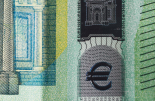Payden & Rygel: Still inflationary pressure, not a Goldilocks moment
Payden & Rygel: Still inflationary pressure, not a Goldilocks moment

By Jeffrey Cleveland, Director and Chief Economist, Payden & Rygel
I’m not as excited about inflation cooling off as some of my colleagues and maybe competitors are. We still see a lot of inflation pressure. Looking at median CPI month to month lets you filter through some of the noisy outliers every month. That was still up 0.4% in the month of April. So, to me that is a lot of underlying inflation.
I think this means the Fed is at best on hold for the foreseeable future which is critical to point out. The way we’ve been framing what’s moving markets, is that you could think of the different tail scenarios. So, a tail scenario where the economy accelerates, and inflation accelerates doesn’t look like to us that’s what we’re seeing in the data.
We see decent growth and sticky inflation but not an acceleration. But we don’t see a recession. So those are your two tails, the no landing, if you will, and then the recession scenarios.
To me this is not a Goldilocks scenario yet. Goldilocks is when you get the month-to-month readings on inflation to cool off a bit more than we’ve seen. So, I still think we’re in the sticky or stubborn or purgatory, if you want to call it that. Inflation is not re-accelerating but it’s not cooling off as much as people hoped at the start of the year, as much as forecasters and policymakers hoped. So, we’re still stuck.
We’re somewhere between three and four percent year-on-year on core inflation. This is not terrible, but this is not Goldilocks. This is not two percent inflation that’s going to start to turn on the green light for the rate cuts. And I think maybe there will be some disappointment with that as time goes on. So maybe people walking around with Dow Jones Index 40K hats is just temporary.
Housing within Inflation
Some continue to point towards what they see as a decline in rents that’s lagged and is coming and it’s a big part of that inflation basket. We’ve been hearing the story consistently: that there’s a lag, and sooner or later it’s going to come out; but it’s not playing out.
Maybe the lag is longer or maybe a lot of people were fixated on some private sector rent metrics that aren’t exactly giving a good read on the government data or simply we just don’t have enough housing. That’s keeping pressure on house prices and also keeping pressure, I think, on rents. So, I just think that story sounded great but it’s not playing out.
Even if you exclude shelter, ex-housing, everything else, and all your other services, we’re still running at four percent year-on-year or thereabouts. Even if we think housing cools off, shelter component cools off, we still have an inflation problem in our view.
That’s why I was saying everyone should just look at median CPI so we can avoid having all these debates about what to ex out. We just look at the median, it filters outliers every month. That’s the cleanest, simplest approach. And that was up 0.4% last month.
Bond Rally
There was a big bond rally and almost celebration around a month where we didn’t increase the monthly rate, but it’s still positive. I think the celebration for bond folks was that they think the scenario in which the Fed has to do more hiking has been reduced.
Inflation did not re-accelerate. It ticked down month-by-month. If you look at headline, it was a 0.3, if you look at core. So that’s the good news. It’s like “whoa, we made it through without an acceleration”. Still leaves us in the purgatory scenario though, in my opinion.
I think the front end of the bond market is much more fairly valued now. This is a revelation, but compared to the start of the year, I think we had six or seven rate cuts priced in. Now we have one, one and a half. So that’s much more reasonable.
I still think there’s a high possibility that we go throughout this entire year without any cuts, and I think that’s going to keep the front end elevated. Further out the curve when you think about the 10-year treasury, I think it’s in the range right now of being fairly valued.
I don’t think bonds are that cheap actually because of my view on inflation and because of my view of what the path of the Fed funds rate will be. And I’m kind of optimistic on output. So, productivity growth and labor force growth I think will help the economy in the years ahead.
Those are really the three key factors for thinking about how fairly, or richly, or cheaply valued a 10-year treasury is. The inflation premium, the path of Fed bonds, and real output for the economy. And I think all those point to a 10-year yield right in the vicinity that it’s in: 4.7%, 5%. It makes sense to me.
So, depending on your perspective, maybe that’s an opportunity to buy out there. But I don’t think you should get your hopes up if you’re expecting a big rally in the 10-year part of the curve. That tends to happen when the economy completely rolls over, and we’re not seeing that, at least not yet.










